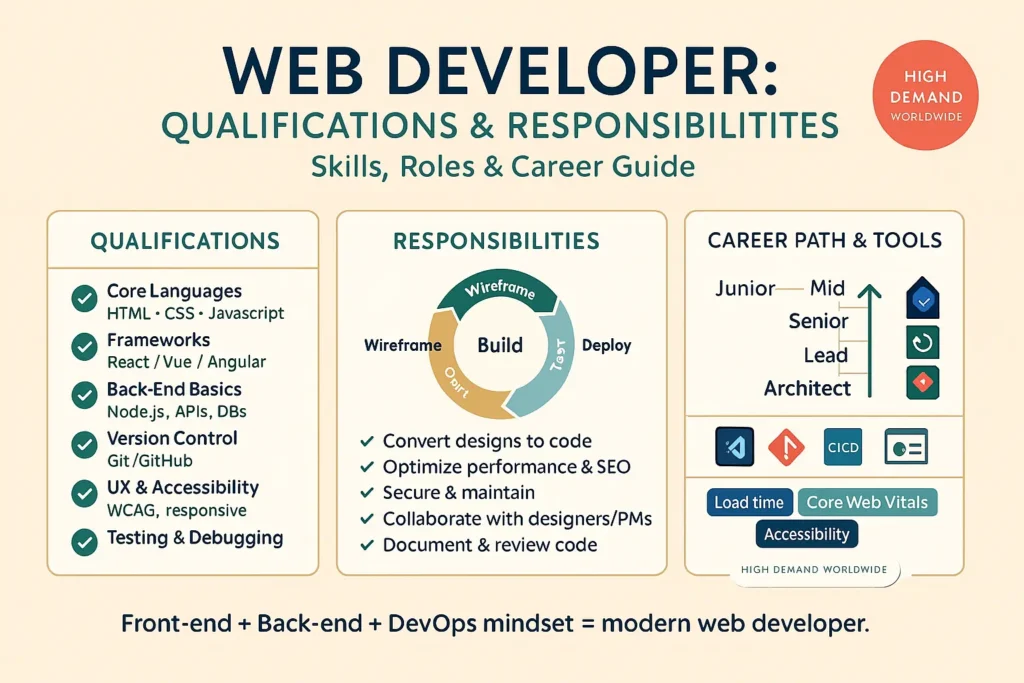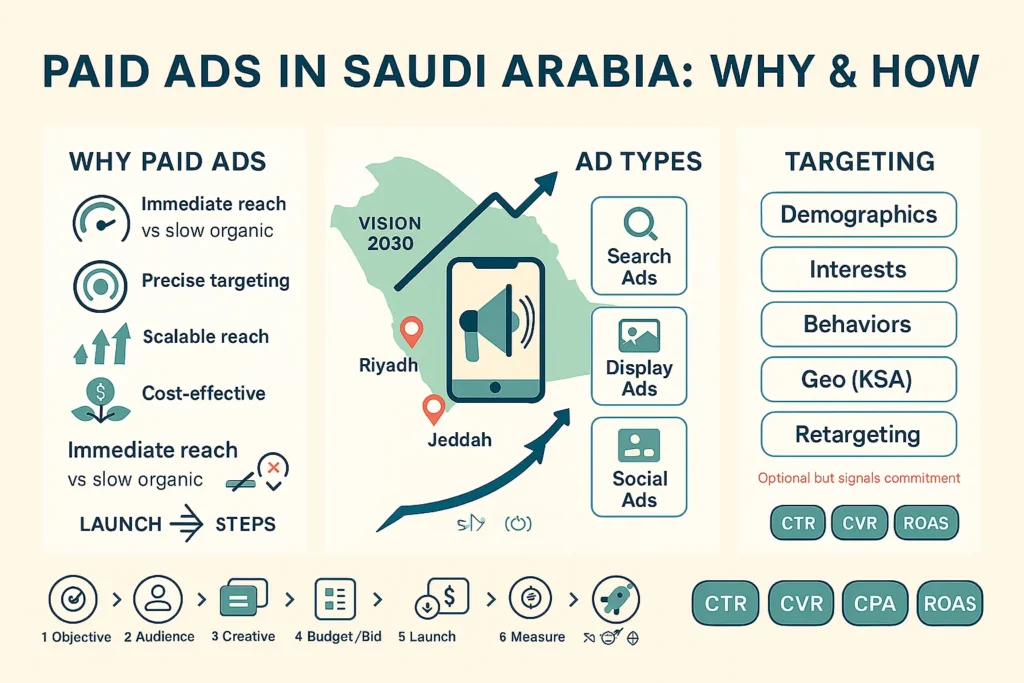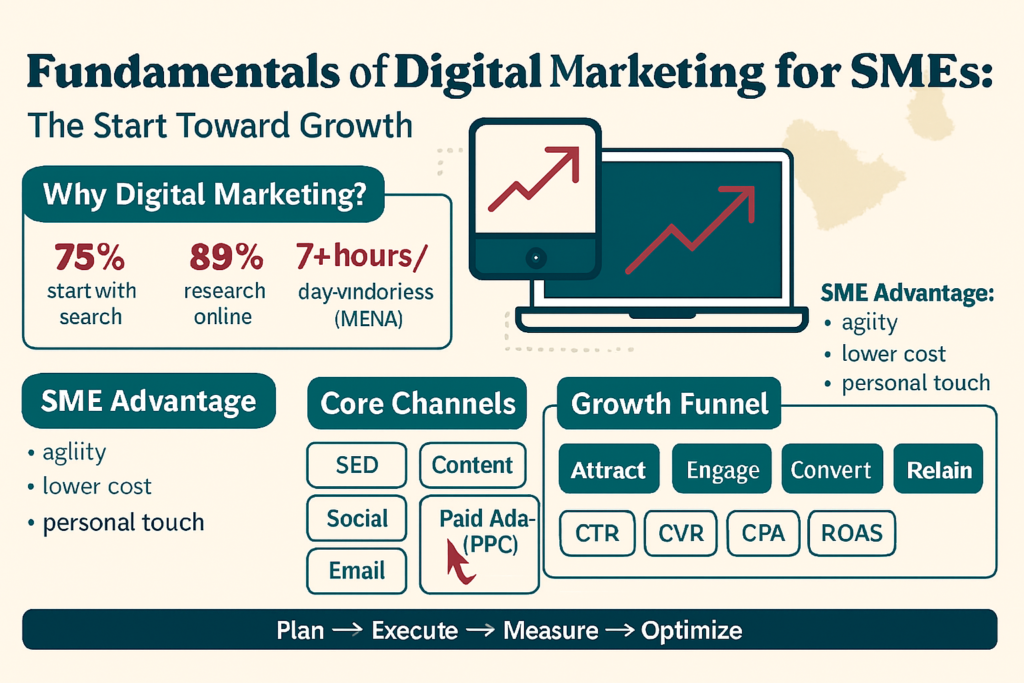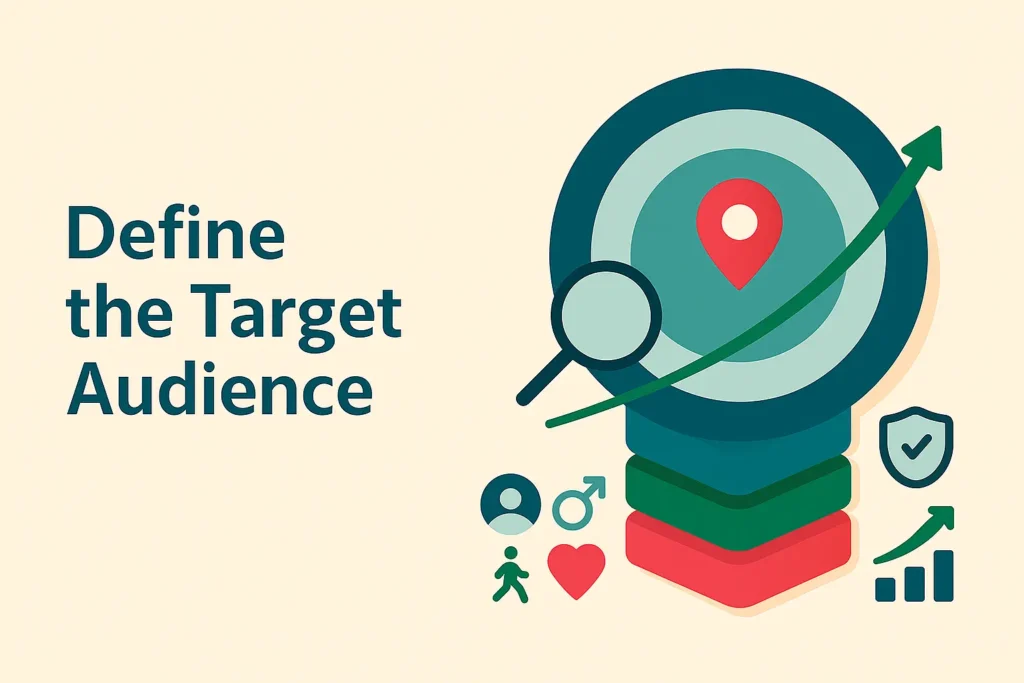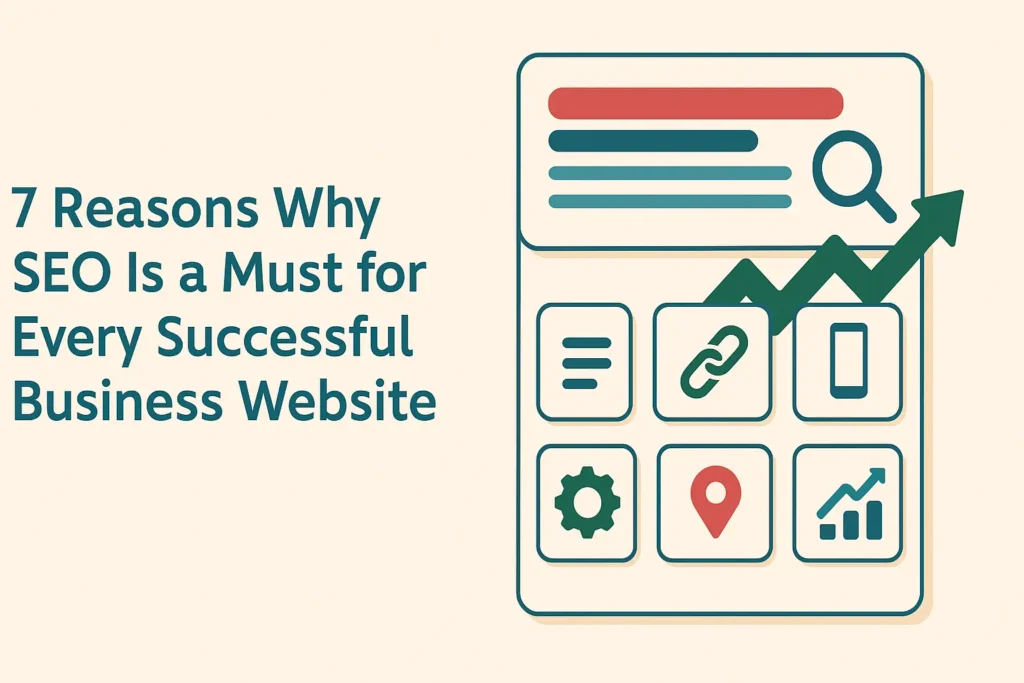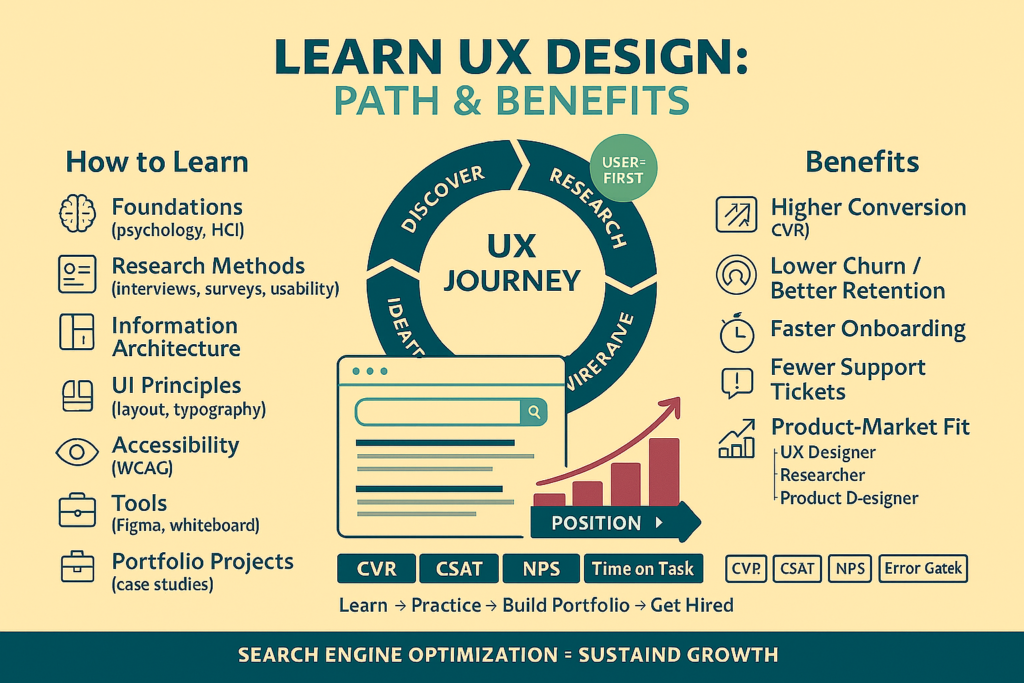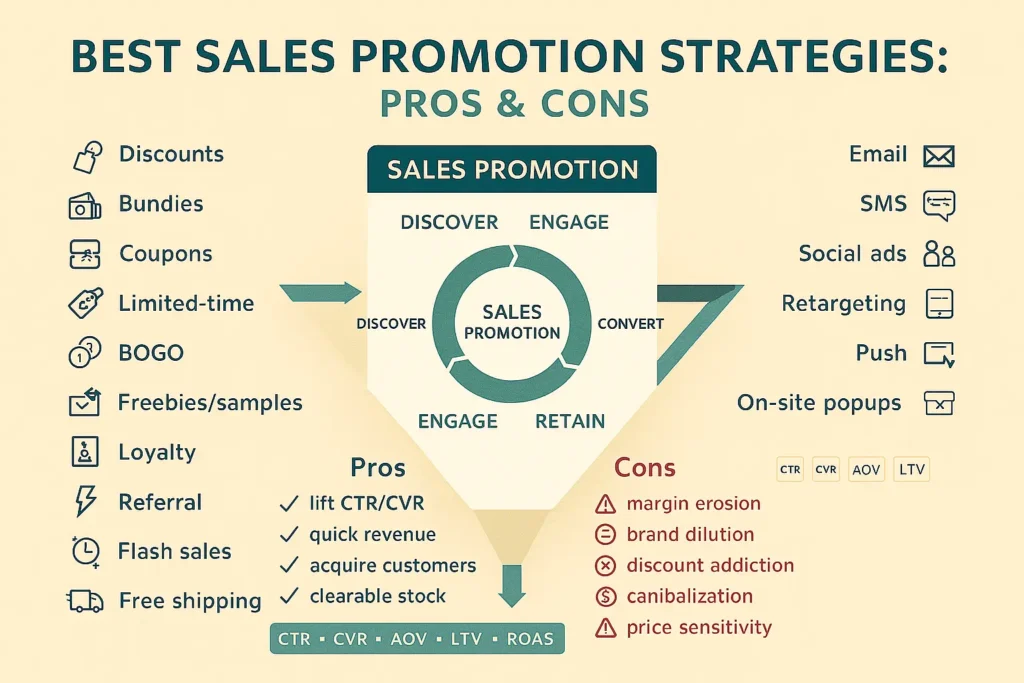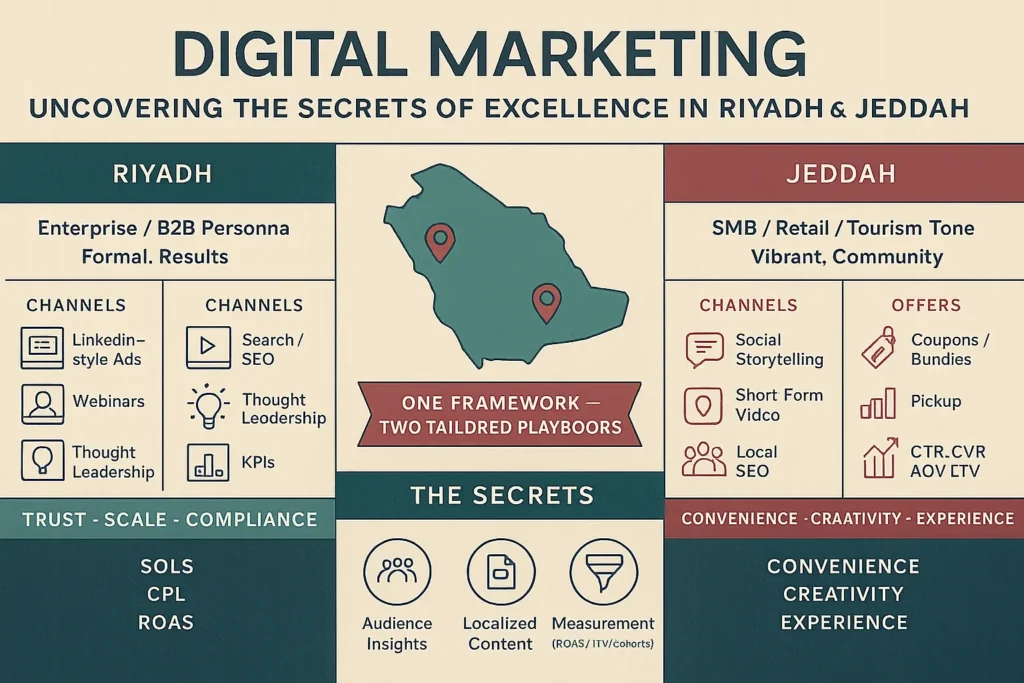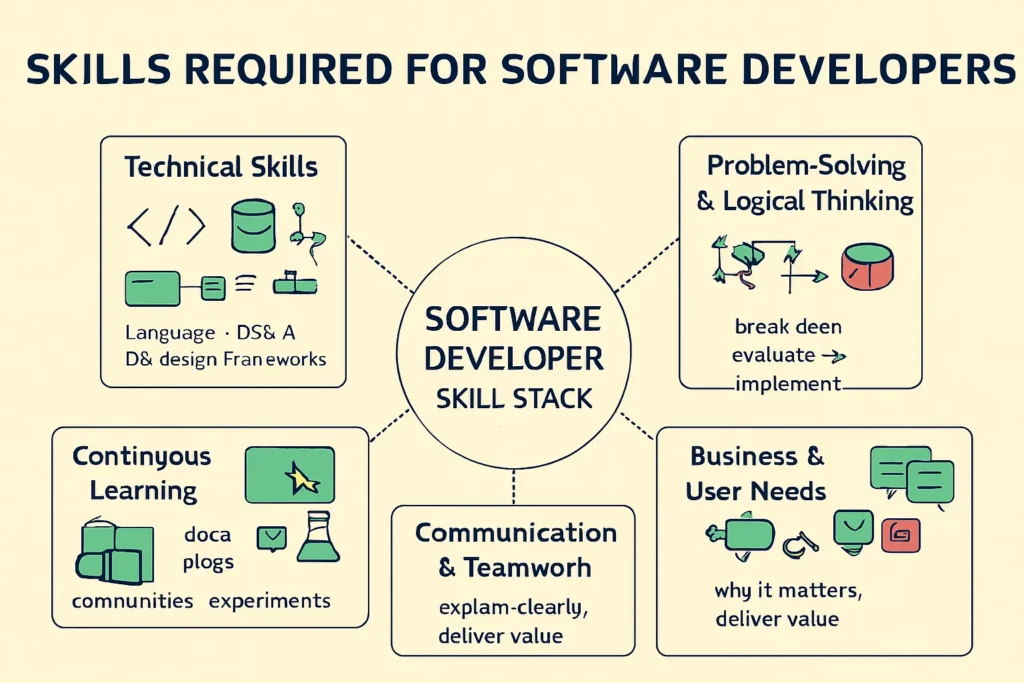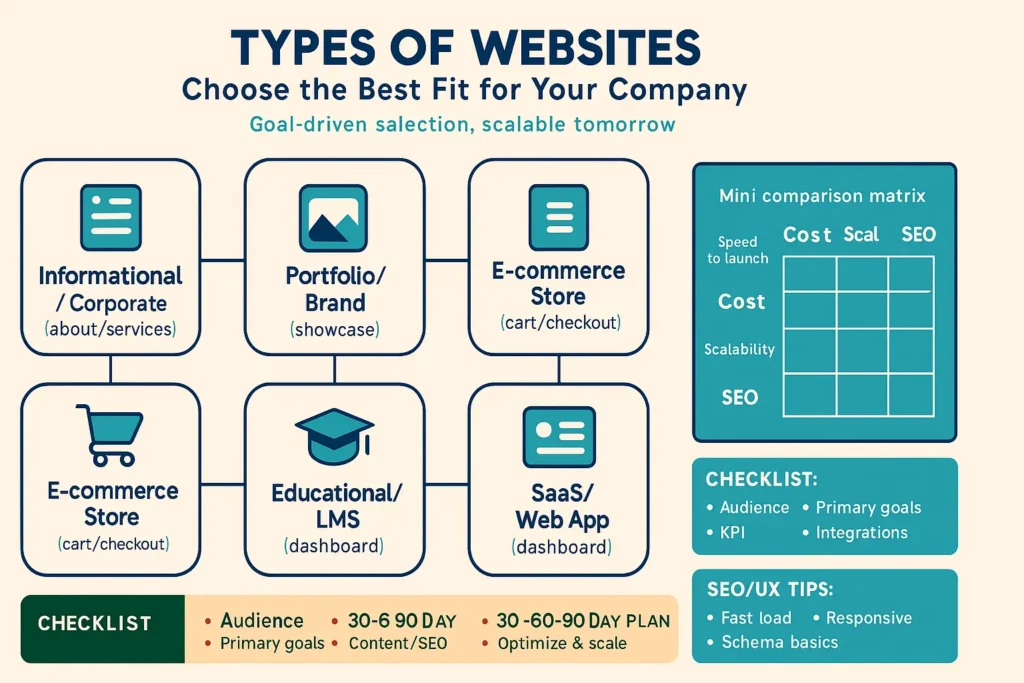
Types of Websites: How to Choose the Best Fit for Your Company
How right Types of Websites now make a difference later?
Choosing the appropriate types of websites isn’t a cosmetic detail; it’s a strategic decision that impacts customer acquisition, lowers the cost of acquisition, and strengthens market trust. A website isn’t just a “digital brochure,” but a key touchpoint between your brand and your audience’s needs. With options ranging from a simple informational site to an online store, an educational platform, or a web app (SaaS), the question becomes: how do you choose the type that achieves your goals today and remains scalable tomorrow?
In this practical guide, you’ll learn about the most common types of websites, the advantages and challenges of each, the use cases they’re best suited for, and a goal-driven selection methodology with a checklist, a 30–60–90 day implementation plan, and tips for search engine optimization and user experience.
What determines your site type?
Business goals first
- Lead generation: landing pages + company website + forms/automation.
- Direct sales: a fully integrated e-commerce store with payments and shipping.
- Building authority: a blog/content magazine or knowledge center.
- Hiring and trust building: a careers page and portfolio/customer stories.
- Training/subscriptions: an educational platform or paid community.
Audience and user experience
Audience behavior (mobile vs. desktop), connection speed, language, and cultural and legal barriers—all of these factors affect the structure and content.
Content and resources
Do you have an ongoing content team? Do you need an easy dashboard? This guides you toward a traditional CMS or “Headless.”
Budget, speed, and security
Initial budget vs. operational cost (hosting, plugins, maintenance, security).
Security and compliance (especially for stores, memberships, and sensitive data).
Scalability and integrations
Integrations with CRM, payment gateways, shipping systems, email marketing, analytics, and automation.
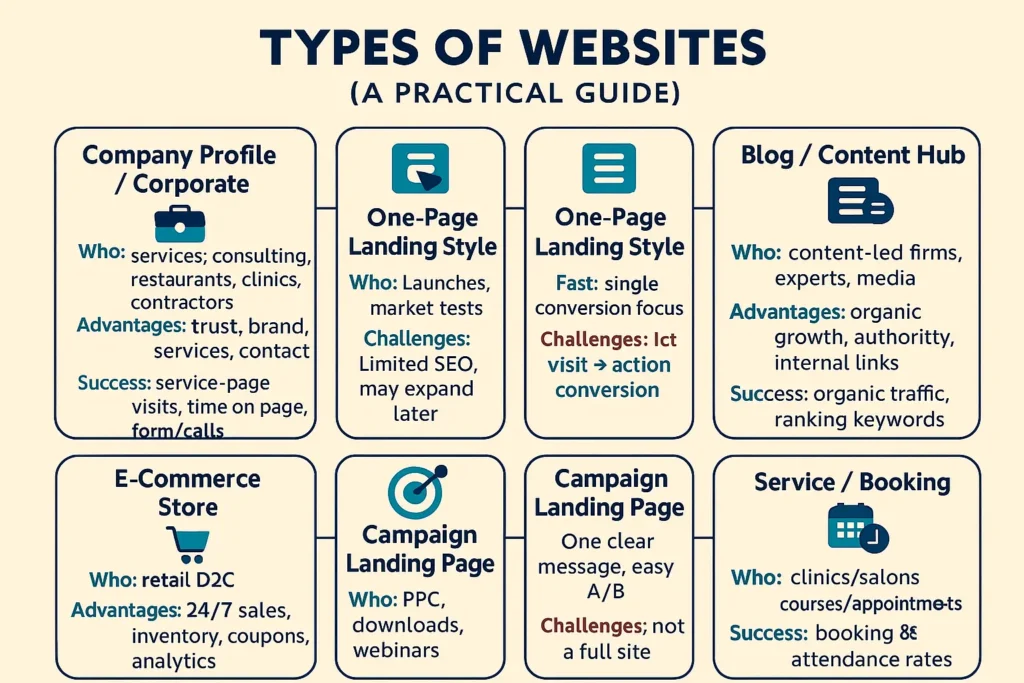
Types of Websites (A Practical Guide)
1) Company profile / corporate websites
- Suitable for whom? Service companies, consulting firms, restaurants, clinics, contractors.
- Advantages: build trust quickly, showcase brand identity and services, contact forms, map, and contact details.
- Challenges: requires periodic updates and local keyword research.
- Success indicators: visits to service pages, time on page, submitted forms/calls.
2) One-page websites (One-Page / Landing Style)
- Suitable for whom? Product/offer launches, market testing.
- Advantages: fast execution, high focus on a single conversion.
- Challenges: limited organic content (SEO), may need to expand later.
- Success indicators: conversion rate from visits to action (form/WhatsApp/purchase).
3) Blogs and magazines (Blog/Content Hub)
- Suitable for whom? Companies relying on content marketing, experts, media platforms.
- Advantages: sustainable organic traffic, authority building, strong internal linking.
- Challenges: requires a content strategy, regular publishing, and an editorial team.
- Success indicators: growth in organic traffic, ranking keywords, subscriptions/conversions.
4) E-commerce stores (E-Commerce)
- Suitable for whom? Retail/direct-to-consumer brands.
- Advantages: sell 24/7, inventory management, coupons, sales analytics.
- Challenges: security/payment gateways/logistics/return policies/high performance.
- Success indicators: conversion rate, average order value, repeat purchase rate, cart abandonment rate.
5) Campaign landing pages (Landing Pages)
- Suitable for whom? PPC campaigns, downloads, webinars.
- Advantages: one clear message, easy A/B testing.
- Challenges: not sufficient on its own as a substitute for a comprehensive site.
- Success indicators: conversion rate, cost per conversion, quality of leads.
6) Service and booking websites (Service/Booking)
- Suitable for whom? Clinics, salons, courses, and appointment booking.
- Advantages: calendar, upfront payments, automatic reminders.
- Challenges: schedule synchronization, cancellation policies, and multi-language support.
- Success indicators: booking rate, attendance rate, customer ratings.
7)Portfolio websites (Portfolio)
- Suitable for whom? Photographers, designers, creative agencies, contractors.
- Advantages: compelling work showcases, testimonials, and case studies.
- Challenges: image/performance optimization, preventing unwanted copying.
- Success indicators: gallery views, request-for-quote submissions, referrals.
8) Educational platforms and Learning Management Systems (LMS)
- Suitable for whom? Academies, trainers, training companies.
- Advantages: courses, quizzes, certificates, subscriptions.
- Challenges: content protection, user experience, and recurring payment gateways.
- Success indicators: completion rates, subscriber retention, and recurring revenue.
9) Communities and forums (Community/Forum)
- Suitable for whom? Brands with active audiences, SaaS, and professional clubs.
- Advantages: user engagement, self-service support, and high loyalty.
- Challenges: moderation and content, spam prevention.
- Success indicators: number of active members, replies/threads, time spent on the platform.
10) News portals and media websites
- Suitable for whom? Media institutions, sector-specific content companies.
- Advantages: categories, authors, archiving, ads/subscriptions.
- Challenges: browsing speed under traffic pressure, strict editorial policies.
- Success indicators: pages per visit, reading time, ad/subscription revenues.
11) Governmental and service websites
- Suitable for whom? Government entities, municipalities, and authorities.
- Advantages: e-services, complaints/requests, accessibility.
- Challenges: compliance and standards, high security, and scalability.
- Success indicators: completed transactions, beneficiary satisfaction, and response time.
12) Web apps and SaaS
- Suitable for whom? Companies offering a subscription-based digital product.
- Advantages: recurring value, dashboards, API integrations.
- Challenges: product design, performance, support, and feature lifecycle.
- Success indicators: monthly retention, recurring revenue, and user activation.
13) Personal pages/Resumes
- Suitable for whom? Freelancers, students, thought leaders.
- Advantages: quick showcase of experience and social links/PDF resume.
- Challenges: genuinely standing out amid similar templates.
- Success indicators: profile views, messages/offers, name-based search visibility.
14) Knowledge bases and FAQs (Knowledge Base/FAQ)
- Suitable for whom? Customer support, technical products.
- Advantages: reduces support load, 24/7 availability, improved post-purchase experience.
- Challenges: continuous updates, rigorous information architecture.
- Success indicators: article visits, reduced support tickets, and helpfulness ratings.
15) Multilingual/multi-region websites (Multilingual/Multiregion)
- Suitable for whom? Companies operating across countries/local markets.
- Advantages: linguistic and cultural relevance, local optimization.
- Challenges: managing translations, hreflang tags, and brand consistency.
- Success indicators: traffic growth per language, local rankings, and regional conversions.
16) Multi-tenant/marketplace websites (Multi-Tenant/Marketplace)
- Suitable for whom? Marketplaces connecting sellers/providers and buyers.
- Advantages: supply/demand network, commissions, strong organic growth when successful.
- Challenges: content governance, quality assurance, balancing supply and demand.
- Success indicators: GMV, number of active sellers, and deal completion rates.
Keep reading and uncover secrets that can change the way you work. How to Use AI to Design an Online Store That Attracts Customers
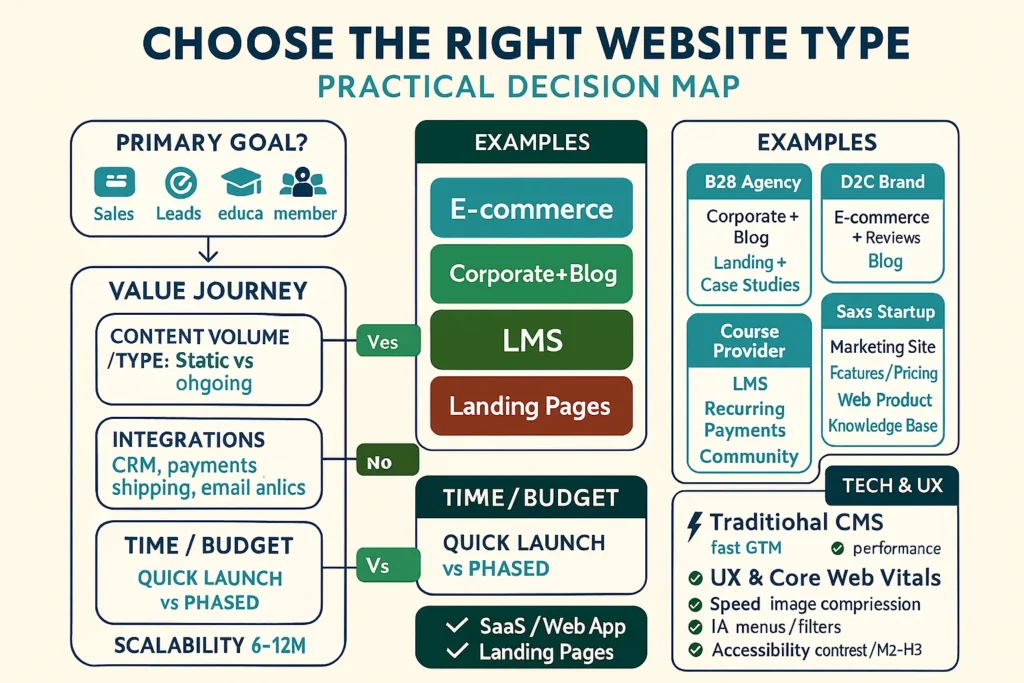
How do you choose the best type? (A practical methodology)
A simplified decision map
- Define the primary goal: sales? lead generation? education? membership/subscription?
- Value proposition and journey: what steps do you want the visitor to take?
- Content volume/type: static or continuously updated? text/visual/video?
- Required integrations: CRM, payments, shipping, email, and analytics.
- Time/budget: quick launch or phased build?
- Scalability: What will you need after 6–12 months?
Examples linking goals to types
- B2B services agency: company website + blog + campaign landing pages + case studies.
- Direct-to-consumer brand: e-commerce store + reviews + blog for recipes/use cases.
- Course provider: LMS platform + recurring payments + private community.
- SaaS startup: marketing site + feature/pricing pages + web product + knowledge base.
Technical architecture: Traditional CMS or Headless?
- Traditional CMS (e.g., WordPress): fast go-to-market, thousands of themes and plugins, suitable for most types (company/blog/store with a reliable plugin).
- Headless (separate frontend + content dashboard): higher performance, security, and scalability; suitable for large, multi-channel applications (web/mobile/displays).
- The choice depends on: project size, development team, performance requirements, and channel roadmap.
User experience (UX) and performance (Core Web Vitals)
- Speed: image compression, Content Delivery Network (CDN), and clean code.
- Information architecture: clear menus, filters/search, logical hierarchy.
- Accessibility: color contrast, alt text, and correct H2/H3 heading structure.
- Responsive design: mobile-first, smooth operation.
- Performance measurement: track CLS/LCP/INP metrics and improve them regularly.
Keep reading and uncover secrets that can change the way you work. How to Differentiate Your Web Design Companies in Jeddah Using AI: The Ultimate Competitive Edge
SEO by site type
Shared fundamentals
- Keyword research related to “types of websites” and your niche.
- Clear titles and subheadings, concise and compelling meta descriptions, and well-planned internal links.
- Appropriate structured data (Schema): Organization, LocalBusiness, Product, Article…
- Original, useful content; optimized media; fast, secure pages (HTTPS).
Customization by type
- Company/Services: dedicated service pages, FAQs, and local customer testimonials.
- Store: optimized category/product pages, reviews, FAQs, Product schema.
- Blog/Magazine: topic clusters, strong internal linking.
- LMS/Memberships: information-rich course pages, tier/price comparisons.
- SaaS: feature/solutions pages, case studies, transparent pricing, free trials.
Security, hosting, and compliance
- SSL certificate, firewalls, automated backups, malware monitoring.
- Regular updates for core/themes/plugins; principle of least privilege for users.
- Privacy compliance (privacy policy, cookies, data deletion requests).
- Choose hosting with sufficient resources and reliable support, with the ability to scale as visits grow.
Analytics and conversion
- Install reliable analytics to track: sources, landing pages, paths, conversion events.
- A/B testing for headlines, buttons, and forms.
- Monthly dashboard: organic visits, conversion rate, cost per lead, return on ad spend.
Common mistakes to avoid
- Building the site before defining the primary goal and audience.
- Overlooking mobile performance or relying on heavy, uncompressed images.
- Neglecting security and updates, or lacking backups.
- Ignoring a content plan or relying on a single page without a growth strategy.
- Too many unnecessary plugins that slow performance and increase risk.
Pre-launch checklist
- Clear goal and defined success metrics.
- Organized information architecture and H2/H3 headings.
- Original, structured content with relevant keywords.
- Excellent performance and speed (PageSpeed tests).
- Analytics, events, and conversion goals configured.
- Legal and security policies, and an active SSL certificate.
- Content/ads plan for the first 90 days.
- Welcome/follow-up/abandoned-cart email templates (if applicable).
- Schema setup, sitemap file, and robots file.
- Comprehensive cross-browser and cross-device testing.
Keep reading and uncover secrets that can change the way you work. Our Services for Launching a Website in Riyadh: Smart Design and AI-Powered Marketing for Rapid Success
30–60–90 Day Execution Plan
Days 1–30 (Foundation)
- Perform keyword research related to your field and the phrase “types of websites” within your context.
- Choose the most suitable type/mix (company site + blog + landing pages/store… depending on the goal).
- Design the site architecture, core pages, and key messages (Value Proposition).
- Select the tech stack (CMS/Headless), hosting, theme/framework, and launch an MVP.
31–60 (Expansion)
- Produce 6–12 pillar articles, create topic clusters, and build internal links.
- Improve speed (WebP images, caching, CDN); enhance security and backups.
- Run small paid campaigns to test landing pages and optimize forms/buttons.
- Implement Schema, set up Search Console, and index the key pages.
Days 61–90 (Optimization)
- A/B test headlines, CTAs, and landing layouts.
- Expand integrations (CRM, email automation, retargeting).
- Review keyword performance, update top-performing content, and build new clusters.
- Document processes (editing, publishing, maintenance, security) to ensure operational sustainability.
Turn your goals into real achievements with our tailored services – request the service now.
Frequently Asked Questions (FAQ)
Can I combine more than one type?
Yes. Many companies start with a company site plus a blog and landing pages, then add a store or an LMS as needed.
When should I choose Headless instead of a CMS?
When you need high, multi-channel performance, have a development team, or expect major scale and advanced integrations.
How do I ensure scalability?
Adopt a modular architecture and use reusable components, and plan quarterly technical and content roadmaps.
What are the most important success indicators?
They depend on the goal: conversions/sales/bookings/subscriptions/organic growth—with continuous tracking and periodic optimization.
Conclusion: Choose today with an eye on tomorrow
A smart decision doesn’t chase every trend; it aligns types of websites with your business goals, resources, audience, and a measurable growth plan. Start with the minimum viable outcome, then improve based on data—not impressions. This way, your site evolves from a pretty façade into a true growth engine.
Final tip: Write down your goals and success metrics now. Extract an “initial features list” tailored to your situation from this guide, then proceed with a 30–60–90 day plan, incorporating small weekly reviews to ensure continuous improvement.
